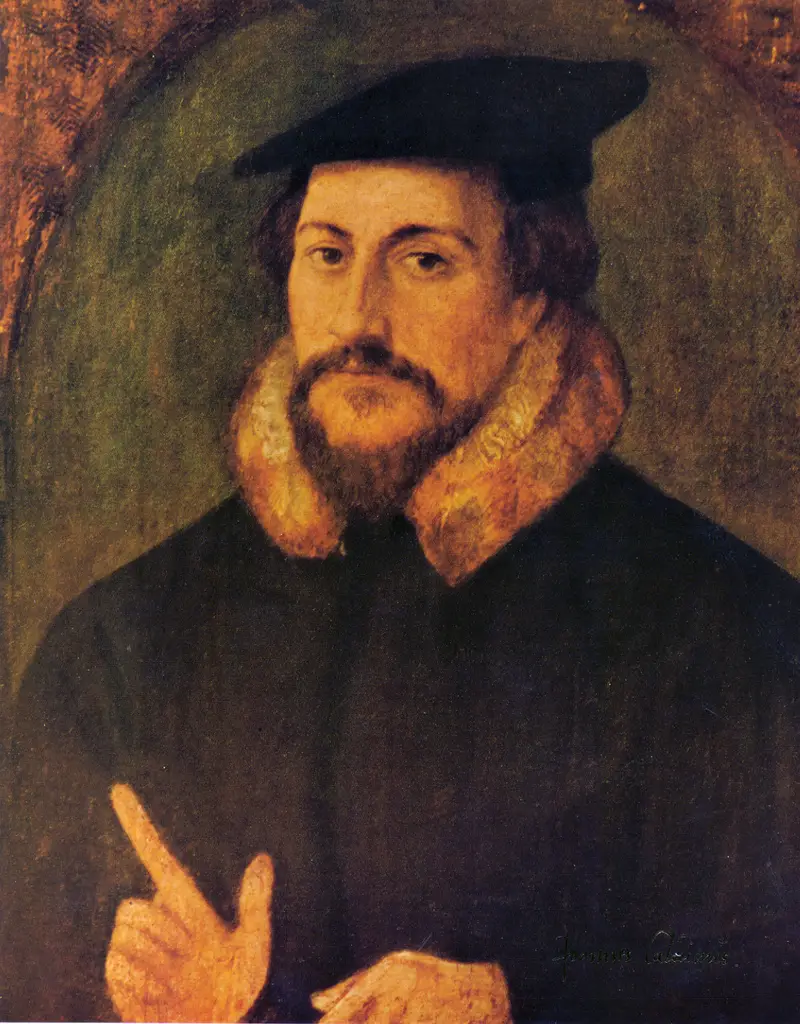On the 2nd of April 1502, Arthur Tudor, eldest son of King Henry VII, died at Ludlow Castle. He was just fifteen years old and had been married for less than five months.
Arthur Tudor had married Katherine of Aragon, daughter of King Ferdinand II of Aragon and Queen Isabella I of Castile. King Henry VII had worked hard for several years to secure a marriage between his son and Princess Katherine to see a strong alliance created between England and Spain. The marriage would also help to put England on the international stage and secure the succession of the Tudors.
The young couple were married in a lavish ceremony at St. Paul’s Cathedral on the 14th of November 1501. It was decided that despite the couple's age, Arthur being only fifteen years and Catherine seventeen, they should return to Ludlow Castle, Arthur's primary residence in Wales. On the 21st of December, Arthur and Catherine left London for Ludlow Castle. The couple stayed at Bewdley for a short time and at Woodstock in Oxfordshire, where they celebrated Christmas together. On returning to Ludlow, Arthur, as Prince of Wales, with his council, returned to the task of the governing of Wales.
Unfortunately, plague and illness had been lingering around Ludlow, however the young Prince paid no heed to this and continued with his duties. Then in late March, he and Catherine were struck down by an illness. Both were ordered to their beds and confined in their rooms while attended to by doctors. Servants prayed frantically for the young Prince and Princess of Wales, however, it would be to no avail. While Katherine was still sick in her rooms, her husband and heir to the English throne died.
While the exact cause of Arthur's death remains unknown, several theories have been put forward. It has been suggested that Arthur may have suffered from some form of cancer or possibly consumption. Another theory that has commonly been suggested, which ties in with Katherine of Aragon's illness at the same time, is the dreaded sweating sickness.
The sweating sickness had first struck England in the fifteenth century and appeared on and off with one of the worse epidemics being in 1528. It was believed to have been carried from Europe by rats and transferred to humans by small biting insects. The symptoms were something like influenza or pneumonia, with the patient having pains and aches all over the body, headaches, a great thirst and horrible sweating. They would experience great exhaustion and a desire to sleep, rapid pulse rate, and dizziness. Many who caught the sweating sickness were dead within twenty-four hours.
When the news of the Prince's death arrived, Henry VII was distraught and in his great grief, Elizabeth was sent to comfort her husband. Elizabeth reassured Henry that they were both young and that they would have more children. After leaving her husband, Elizabeth broke down into tears and Henry had to come and comfort his wife.
True to her word, Elizabeth became pregnant with her seventh child shortly afterward. After a long and difficult labour, Elizabeth gave birth to a daughter named Katherine on the 2nd of February 1503 at the Tower of London. Sadly, little Katherine died eight days later, on the 10th of February. Elizabeth of York also fell sick and she died on the 11th of February 1503, on her 37th birthday.
In his Chronicle of the History of England, Edward Hall writes of Arthur's death:
"For that noble prince Arthur, the kynges fyrst begotten sonne, after that he had bene juaryed to the lady Katheryn his vvyfe. v. monethes, departed out of this transitory lyfe, i-u his castel of Ludlowe, and with a great funerall obsequy was buryed in the cathedral churche of Worcettre."
After his death, Arthur Tudor's body was disembowelled, filled with spices and embalmed. The body lay in state until the 23rd of April, when it was taken to a local parish where three masses were said. Then on the 25th of April, in the pouring rain, Arthur's coffin was taken with great ceremony and dignity forty miles to Worchester Cathedral. The weather was so bad that the cart carrying the Prince's coffin repeatedly got stuck in the mud and oxen were used to haul the cart out.
At Worcester Cathedral, the late Arthur Tudor received a funeral befitting his status. Around five hundred and fifty people were involved and almost 2400 yards of black mourning cloth was bought. Over a thousand candles burned using up around 6000 pounds of candle wax! Great prayers were said for the young Prince's soul and the coffin was buried in the south end of the high altar. William Smith, bishop of Lincoln, cast holy water and dirt into the grave and the comptrollers of Arthur's household broke their white staffs and placed them into the grave as a sign of respect. Henry VII ordered a great tomb to be erected in his son's memory.
With Arthur's death, his younger brother Henry became heir to the English throne. The world knows what sort of King Henry VIII was, but how different might history have been had Arthur survived his sickness and become King.
Sarah Bryson is the author of Mary Boleyn: In a Nutshell. She is a researcher, writer and educator who has a Bachelor of Early Childhood Education with Honours and currently works with children with disabilities. Sarah is passionate about Tudor history and has a deep interest in Mary Boleyn, Anne Boleyn, the reign of Henry VIII and the people of his court. Visiting England in 2009 furthered her passion and when she returned home she started a website, queentohistory.com, and Facebook page about Tudor history. Sarah lives in Australia, enjoys reading, writing, Tudor costume enactment and wishes to return to England one day.
Sources
- Abernethy, Susan (2013) Arthur Tudor, Price of Wales, The Freelance History Writer, viewed 24 February 2016, http://thefreelancehistorywriter.com/2013/04/01/arthur-tudor-prince-of-wales/.
- Grueninger, Natalie (2013), The Death of Arthur Tudor, Price of Wales, On the Tudor Trail, viewed 24 February 2016, http://onthetudortrail.com/Blog/2013/04/02/the-death-of-arthur-tudor-prince-of-wales/.
- Licence, Amy (2013) Elizabeth of York the Forgotten Queen, Amberley Publishing, Gloucestershire.
- Penn, Thomas (2011) Winter King: The Dawn of Tudor England, Allen Lane, London.
- Ridgway, Claire (2014) Sweating Sickness in a Nutshell, MadeGlobal Publishing.
- Russell, Gareth (2011) April 2nd, 1502: The Death of Arthur Tudor, Prince of Wales, Confessions of a CI-Devant, viewed 24 February 2016, http://garethrussellcidevant.blogspot.com.au/2011/04/april-2nd-1502-death-of-arthur-tudor.html.
- Weir, Alison (2014) Elizabeth of York: The First Tudor Queen, Vintage Books, London.




Thank you very much for this fine article. It is amazing how much we take health for granted.
I wonder how things would have turned out if Arthur hadn’t died but lived and became King?
England would have remained Catholic.
Abernethy, Susan (2013) Arthur Tudor, Price of Wales,
Grueninger, Natalie (2013), The Death of Arthur Tudor, Price of Wales, On the Tudor Trail, viewed 24 February 2016,
Sorry my English is not so good; Price of Wales, is this New-English?
I only know Prince of Wales
With all your training and education-your writing and punctuation should be better than it is! Don’t you edit what you write?
Are you perfect? As this won’t be the case 1. we are all human so we overlook mistakes and 2.it doesn’t hamper the reading very much
Thanks great to read about prince Arthur Tudor .
I live in ludlow 200yards from the castle.
I walk my dog around the castle every day ,, I look up at the castle and think about Arthur and his wife and think what went on all those years ago.
Very sad they died so young.
Catherine was not 17 at her wedding to Arthur in London on November 14, 1501. She was born on December 16, 1485.